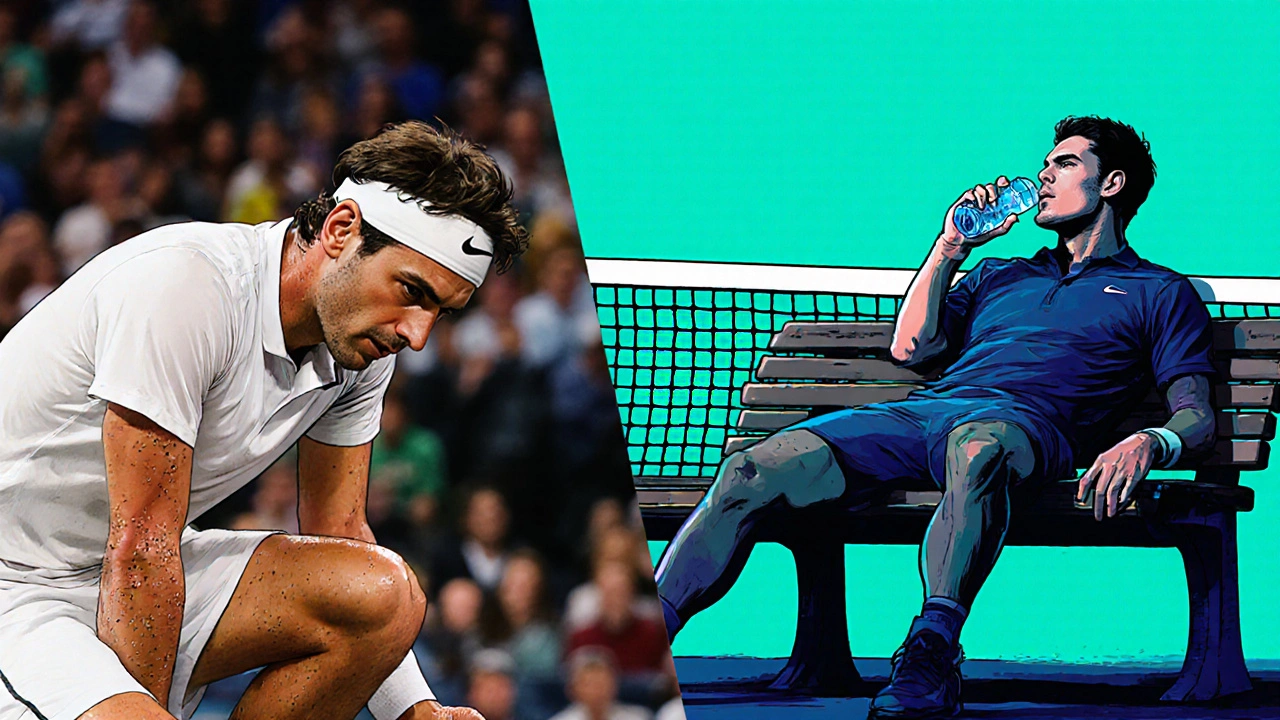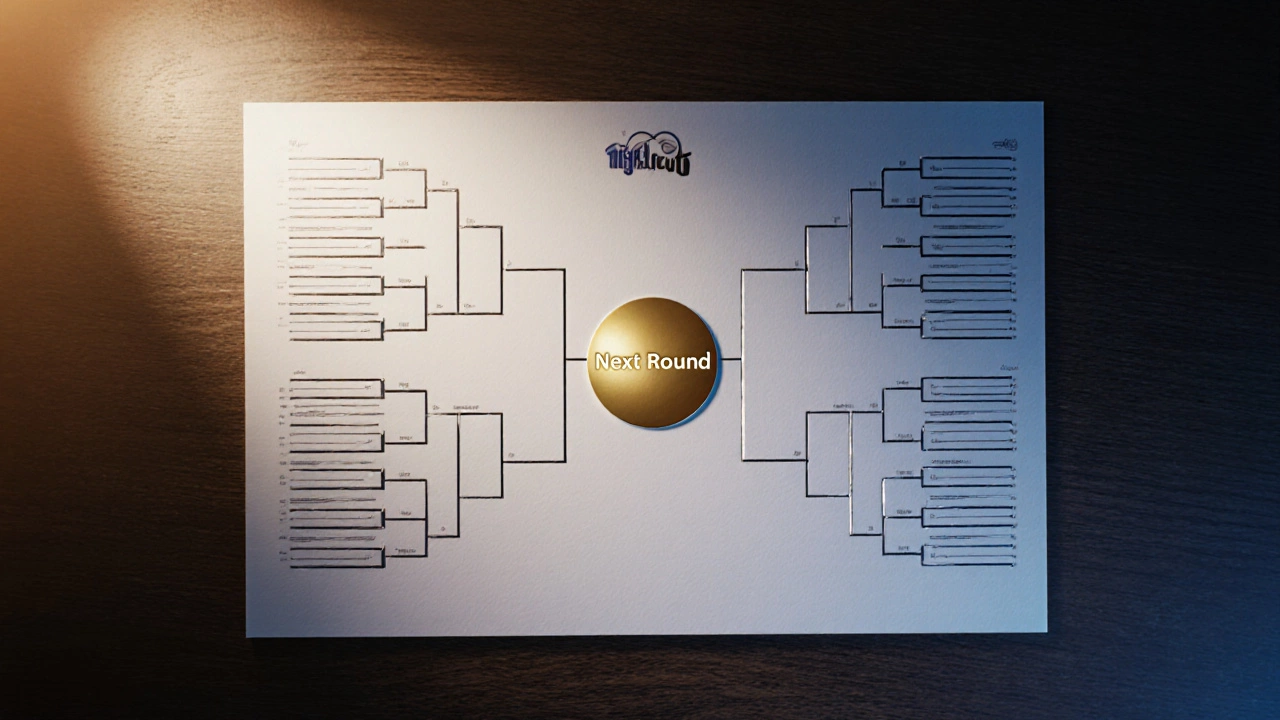Tennis Bye Calculator
Enter values and click Calculate to see bye details
Byes occur when the number of entrants doesn't match a perfect power of two (32, 64, 128).
Top-ranked players receive byes to maintain the bracket structure.
Byes are typically awarded to seeds based on current ATP/WTA rankings.
Ever wondered why top players sometimes start a match without playing the previous round? The answer lies in the tennis bye, a common feature in tournament draws that can change the rhythm of a competition.
What Is a Bye in Tennis?
Bye (tennis) is a scheduled automatic advancement for a player or team when there is no opponent in a particular round of a tournament. It isn’t a win earned on court; it’s a placeholder that keeps the bracket balanced when the number of entrants doesn’t match a perfect power of two (e.g., 32, 64, 128).
Because many tournaments attract a field size that isn’t a perfect bracket, organizers insert byes to fill the gaps. The result: a player moves forward without swinging a racket for that round.
Why Do Tournaments Use Byes?
Most professional events aim for draws of 32, 64, or 128 competitors. When the entry list falls short-say a 56‑player draw in a 64‑slot event-there are eight empty spots. Instead of reshuffling the entire schedule, the tournament assigns eight byes, usually to the highest‑ranked players. This approach preserves the integrity of the seeding system and ensures top talent appears in later rounds, which maintains spectator interest and broadcast value.
The practice also benefits scheduling. By allowing certain players to skip the first round, event planners can spread matches more evenly across days, reducing court congestion and giving broadcasters a predictable lineup.
How Are Byes Assigned?
Assignments follow a clear hierarchy:
- Seed - The top‑ranked entrants, typically the top 8 or 16, receive byes first.
- If seeds are fewer than the number of byes, the next highest‑ranked players (based on ATP or WTA rankings) fill the remaining spots.
- Wildcard entries and qualifiers rarely receive byes unless the draw size forces a random allocation.
This method rewards performance and maintains fairness: players who have earned higher rankings enjoy a lighter early schedule.
Types of Byes and Where They Appear
While most fans encounter first‑round byes, other formats exist:
- First‑Round Bye: The standard in most ATP/WTA events, giving seeded players a free pass to round two.
- Second‑Round Bye: Occasionally used in invitational tournaments where a small field (e.g., 24 players) results in byes for the top eight directly into round three.
- Bye in Round‑Robin Play: In events like the ATP Finals, a player may receive a bye in a round‑robin group if the schedule needs to balance match counts.
Regardless of placement, the underlying principle remains the same: an empty slot in the bracket triggers an automatic advancement.

Bye vs. Walkover vs. Retirement: A Quick Comparison
| Aspect | Bye | Walkover | Retirement |
|---|---|---|---|
| When it occurs | Before the match starts - no opponent assigned | Opponent withdraws after draw is set but before play begins | Player stops playing during a match |
| Effect on score | Advances automatically; no score recorded | Advances automatically; opponent recorded as a win | Match ends; score recorded up to point of retirement |
| Points awarded | Points for the round reached (often same as a win) | Same as a win for the advancing player | Points awarded based on completed games/sets |
| Common cause | Uneven draw size | Injury, illness, or personal reasons before match | Injury or illness occurring mid‑match |
Impact on Rankings and Points
From a ranking perspective, a bye is treated similarly to a win for the round it represents. For example, in a 64‑player draw where a seed receives a first‑round bye, the ATP awards the same ranking points for reaching the second round as a player who won a first‑round match.
This policy encourages top players to accept tournament invitations without fearing a points penalty for skipping an early match. However, the actual match‑play points (e.g., a bonus for a hard‑earned first‑round victory) are lost, which can be a strategic consideration for players chasing specific ranking milestones.
Strategic Advantages and Drawbacks
Receiving a bye can feel like a double‑edged sword:
- Rest and Recovery: Players avoid the physical toll of an extra match, which is valuable during back‑to‑back weeks or after a grueling travel schedule.
- Less Match Rhythm: Skipping a round may disrupt a player's momentum, especially for those who thrive on early‑round match play to adapt to court conditions.
- Observation Opportunity: Observing opponents in the first round can provide tactical clues, turning the bye into a scouting advantage.
Conversely, lower‑ranked players who must battle through qualifiers and first‑round matches often enter later rounds with more match sharpness but at the cost of higher fatigue.
Common Misconceptions About Byes
Many fans assume a bye equals an “easy win,” but that’s not the case. Points are awarded as if the player had won the round, yet no match stats (aces, double faults) are logged. A bye also doesn’t protect a player from a potential early loss; once they start playing, the competition resumes as usual.
Another myth: “Byes are only for Grand Slams.” In reality, any professional event with an uneven draw can employ byes, from ATP 250 tournaments to the prestigious ATP Finals.

How Organizers Decide the Bye Structure
The process starts with the Tournament draw committee, which checks the total number of entrants. If the field doesn’t match a power of two, the committee calculates the required byes (e.g., 128‑player draw with 120 entries needs eight byes). They then allocate those slots to the highest seeds based on the latest ranking list (ATP for men, WTA for women).
For mixed‑gender or team events, the same principle applies, though the seeding may factor in team rankings or combined points.
Real‑World Example: 2024 Miami Open
At the 2024 Miami Open, the men's draw featured 96 players, requiring 32 first‑round byes. All top 32 seeds-players like Novak Djokovic and Carlos Alcaraz-started directly in the second round. This setup meant that a lower‑ranked qualifier had to win two matches just to face a seeded opponent. The byes helped the tournament stay on schedule despite a rainy forecast that threatened multiple days of play.
Statistically, 78% of those seeded players who received a bye reached at least the quarter‑finals, underscoring the advantage of reduced early‑round fatigue.
Key Takeaways
- A bye is an automatic advance given when a tournament draw has empty slots.
- Byes are usually awarded to top‑ranked seeds to keep draws balanced.
- Points for a bye are equivalent to a win for that round, but no match statistics are recorded.
- Strategically, a bye offers rest but may disrupt match rhythm.
- Byes differ from walkovers and retirements, which involve opponent withdrawals or mid‑match stops.
Frequently Asked Questions
Do I earn ranking points for a bye?
Yes. The ATP and WTA award the same points for the round a bye represents as they would for a win in that round. However, you miss out on any bonus points tied to a match victory.
Can a player refuse a bye?
No. Once the draw is finalized, byes are assigned automatically. A player cannot decline a bye without withdrawing from the tournament entirely.
Are byes only for singles matches?
Byes appear in both singles and doubles draws whenever the entry list doesn’t fill a perfect bracket. The allocation method is the same for both formats.
How does a bye affect prize money?
Prize money is awarded based on the round reached, just like ranking points. A player who receives a bye and then loses in their first match receives the payout for the round they reached, not the previous (unplayed) round.
Do Grand Slam tournaments use byes?
Grand Slams have full 128‑player draws, so they rarely need byes. However, in rare cases like a late withdrawal after the draw is set, a lucky loser may fill the spot, avoiding a bye altogether.
